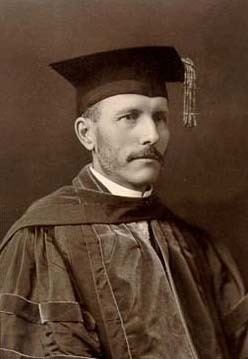Occupation Mathematician Name Florian Cajori | ||
 | ||
Books A history of mathematical notations, A history of mathematics, A History of Elementary Mathemat, The Teaching And Histo, A history of physics in its eleme | ||
Florian cajori
Florian Cajori (February 28, 1859 – August 14 or 15, 1930) was a Swiss-American historian of mathematics.
Contents
Biography
Florian Cajori was born in Switzerland, and was the son of Georg Cajori and Catherine Camenisch. He attended schools first in Zillis and later in Chur. In 1875, Florian Cajori emigrated to the United States at the age of sixteen, and attended the State Normal School in Whitewater, Wisconsin. After graduating in 1878, he taught in a country school, and then later began studying Mathematics at University of Wisconsin–Madison.
In 1883, Cajori received both his bachelor's and master's degrees from the University of Wisconsin–Madison, briefly attended Johns Hopkins University for 8 months in between degrees. He taught for a few years at Tulane University, before being appointed as professor of applied mathematics there in 1887. He was then driven north by tuberculosis. He founded the Colorado College Scientific Society and taught at Colorado College where he held the chair in physics from 1889-1898, the chair in mathematics from 1898-1918, and was the position Dean of the engineering department. While at Colorado, he received his doctorate from Tulane in 1894, and married Elizabeth G Edwards in 1890 and had one son.
Cajori's A History of Mathematics (1894) was the first popular presentation of the history of mathematics in the United States. Based upon his reputation in the history of mathematics (even today his 1928–1929 History of Mathematical Notations has been described as "unsurpassed") he was appointed in 1918 to the first history of mathematics chair in the U.S, created especially for him, at the University of California, Berkeley. He remained in Berkeley, California until his death in 1930. Cajori did no original mathematical research unrelated to the history of mathematics. In addition to his numerous books, he also contributed highly recognized and popular historical articles to the American Mathematical Monthly. His last work was a revision of Andrew Motte's 1729 translation of Newton's Principia, vol.1 The Motion of Bodies, but he died before it was completed. The work was finished by R.T.Crawford of Berkeley, California.
Societies and honors
Books
Articles
These seven installments of the article are available through the Early Content program of Jstor.
